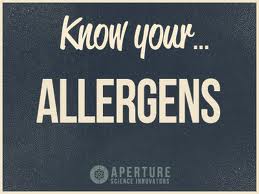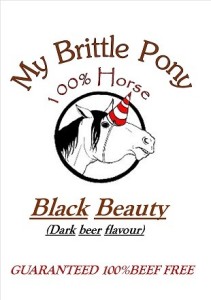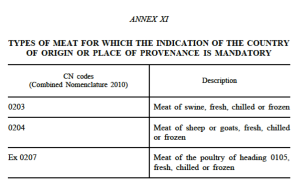New Labelling Regulation: more COOL?
Posted: October 30, 2013 Filed under: Food, Information | Tags: country-of-origin, horsemeat, information, labelling Leave a comment »Rumour has it that the European Commission will decide not to go for full country-of-origin labelling (‘COOL’) on all meat products in the European Union. According to globalmeatnews.com the European Commission is planning to recommend only partial country-of-origin labelling for fresh meats. This is not in line with the request of MEPs and EU ministers who have explicitly asked to beef up the new Labelling Regulation with better meat origin labelling for both unprocessed and processed meats. Why does the Parliament pressure the Commission to impose origin-labels on processed meat?
The reason for the Parliament’s pressure: the horsemeat scandal
The horsemeat scandal has been making headline news over the last year. It was a scandal caused by fraudulent labelling. Horsemeat was present in beef products and the consumer was not informed about this. For a Dutch perspective on the horsemeat scandal, see this article (in Dutch).
To restore consumer confidence and to improve controls the Commission has launched an Action Plan. COOL is part of the Action Plan and the Parliament has been pushing the Commission to adopt mandatory origin labelling for both fresh meat and meat in processed food (meat as an ingredient). In April, and later in September 2013, MEP Glenis Willmott urged the Commission to put rules on country-of-origin in place on ‘country of origin’ labelling for meat in ready meals and in processed foods. This month Health Commissioner Tonio Borg received a letter from MEP Agnès Le Brun to further pressure the European Commission for better meat origin labelling. The MEPs main arguments are that the horsemeat scandal highlighted the need for honest food labelling and by using COOL producers would have a much better grip on their supply chain.
Could COOL ensure honest labelling and prevent fraud?
In March 2013 Commissioner Tonio Borg answered this question in an interview. According to Borg the horsemeat scandal should be seen for what it is: a fraud rather than a demonstration of a regulatory gap. COOL would not necessarily create another hurdle for fraudsters: “(…) one could be honest about the origin but fraudulent about the labelling on the ingredients.” If you want to see the video of the interview, click here. I agree with Borg. The horsemeat scandal was a case of intended mislabelling, COOL will not prevent it from happening again.
Country-of-origin: current EU legislation
The current Labelling Directive only requires the place of origin or provenance to be mentioned on the label where failure to give this information might mislead the consumer (article 3(8)). In the EU, the origin must always be labelled for olive oil, fish (unless it is canned or prepared), beef, fresh or frozen poultry of non-EU origin, wine, most fresh fruit and vegetables, honey and eggs. For all other foods, origin labelling is optional.
New Labelling Regulation
According to article 26 of the new Labelling Regulation, indication of the country of origin shall be mandatory where failure to indicate this might mislead the consumer and for meat listed in Annex XI (see below).
The following steps have to be taken by the European Commission from now:
Autumn 2013 – Adopt a Commission report on the possibility to extend mandatory origin labelling of all types of meat used as ingredient in foods and take any necessary follow up action.
December 2013 – Adopt implementing rules on the mandatory origin labelling of unprocessed meat of sheep, goat, pig and poultry, based on the new Labelling Regulation.
December 2013 – Adopt implementing rules to prevent misleading use of voluntary origin labelling in foods, based on the Regulation on Food information to consumers.
December 2014 – Adopt Commission reports, based on the new Labelling Regulation, on the possibility to extend mandatory origin labelling to:
- other unprocessed meats not already covered by mandatory origin labelling rules, such as horse, rabbit, game meat etc.;
- milk;
- milk as an ingredient in dairy products;
- single ingredient foods;
- unprocessed foods;
- ingredients that represent more than 50% of a food.
So far, no official report from the European Commission on the meat labelling subject has been released, but it is expected to be published soon. Anyway, you will see an update here as soon as the report is published.
More COOL?
The Commission has not given a clear position on COOL yet, but if the rumours are true, the Commission is set to propose COOL for fresh pork, poultry and lamb. Compared to the current legislation, this results in more COOL because the requirements are being rolled out from beef to other meats, which will have an impact on the meat industry. But not totally COOL as the Parliament wants to see it. At this point it looks like COOL for processed meat will be rejected, which probably will be substantiated through an impact assessment. COOL for processed meat is likely to turn out to be too costly for the industry, and the consumer might not want to pay the price for origin information. Of course this is still speculative. Stay tuned for the update!
Food Information on Allergens: no escape!
Posted: September 17, 2013 Filed under: Food, Information | Tags: allergen, allergens, food, information, labeling Leave a comment » Your company wants to provide bullet proof information on the food products it offers for sale in view of the upcoming changes in food legislation? This post may be helpful to you, as it highlights the issue of allergens and substances causing intolerances addressed by Regulation 1169/2011 on the provision of food information to consumers (“the Regulation”). You may recall that the rules laid down in the Regulation apply to food business operators at all stages in the food chain, where their activities concern the provision of food information to consumers. The new rules will in principle enter info force on 13 December 2014. However, in order to avoid time constraints by the end of 2014, a large number companies aim acting in compliance as soon as possible. What should be taken into account?
Your company wants to provide bullet proof information on the food products it offers for sale in view of the upcoming changes in food legislation? This post may be helpful to you, as it highlights the issue of allergens and substances causing intolerances addressed by Regulation 1169/2011 on the provision of food information to consumers (“the Regulation”). You may recall that the rules laid down in the Regulation apply to food business operators at all stages in the food chain, where their activities concern the provision of food information to consumers. The new rules will in principle enter info force on 13 December 2014. However, in order to avoid time constraints by the end of 2014, a large number companies aim acting in compliance as soon as possible. What should be taken into account?
The issue of allergergies/intolerances
As allergies and/or intolerances seem to occur more frequently nowadays, the Regulation aims to ensure that full information is provided to allow the consumer to make an informed choice. The EU here clearly follows the example of the US, where FDA requirements on labeling allergens information already is in place. The Regulation stipulates to this respect that any ingredient or processing aid causing allergies or intolerances used in the manufacture or preparation of the food and still present in the finished product shall be indicated in the list of ingredients.
How to list allergens/substances causing intolerances?
This should be done in descending order or weight, as recorded at the time of their use in the manufacture of the food, where the allergens should be emphasised by using a typeset that clearly distinguishes it from the rest of the ingredients, by means of font, style or background colour. If the product does not contain a list of ingredients, then it should mention as a minimum: ”contains….” followed by the allergens. For the time being, 14 types of allergens have been distinguished, but the Commission is at liberty to extend the current list on the basis of a delegated act.
Allergens obligations also for non-prepacked food
Whereas EU food legislation used to apply only to prepacked food, it is striking to note that the obligation to provide information on allergens/substances causing intolerances also applies to non-prepacked food. More precisely, such obligation exists for foods that are offered for sale to the final consumer or to mass caterers without prepackaging, or where foods are packed on the sales premises at the consumer’s request or prepacked for direct sale. So do not be surprised to find a warning at the cheese corner of your Albert Heyn grocery stating that the products sold contain lactose, beind one of the allergens defined under the Regulation.
Stricter national requirements/means of providing information
More particulars, such as the quantity of the allergens or its country of origin, may need to be mentioned too, but only if such has been declared mandatory under national law. The sensitive area of allergens allows Member States to formulate stricter requirements as well (albeit within the Regulation’s framework). However, they are also at liberty to adopt national measures concerning the means through which the information on allergens are to be made available.
How to handle non prepacked food requirements?
It can only be hoped for the Member States adopting national measures on the means of providing information in this area, adopt a practical approach. Although providing information “upon request” is not to be considered as a “means of providing information”, national measures may stipulate that detailed allergen/intolerance information may be given upon request of a consumer. However, such information should be provided in a conspicuous place and in such a way that it is easily visible and clearly legible. This is a practice that restaurants and cafes will need to get used to.
Conclusions
Allergies and substances causing intolerances are in the centre of interest. Many companies whom previously did not have to deal with information on allergies will find that the Regulation also applies to their business. In addition to getting acquinted with and stay posted on the EU allergens requirements, it is important to keep an eye on national legislation in this area. Member States are at liberty to formulate stricter national requirements here. Therefore, despite the aim of harmonization that the Regulation aims to achieve, obtaining local advice for the launch of a new product continues to be a sound plan. Also, stay tune to FoodHealthLegal, as we will provide you with information on requirements for the name of your product and other labeling requirements shortly.


